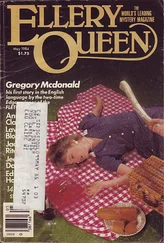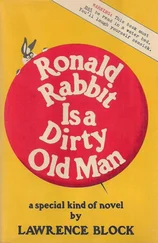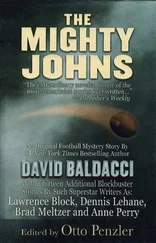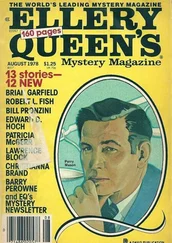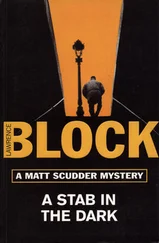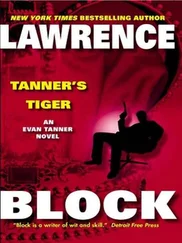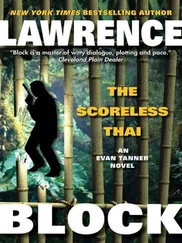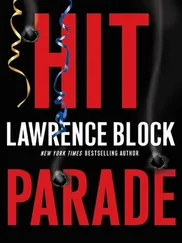I waited. The sky grew lighter and then the sun was suddenly up above the horizon. I splashed cold water on Daly. Nothing happened. I could see all of Kabul waking up and wandering around to see me conferring with an unconscious Irishman on Amanullah’s back lawn.
I turned his head so that the sun was in his eyes. I splashed more cold water on him.
The eyes opened.
“Bejasus,” he said. “You’ve broken my head.”
“You had it coming.”
“I’m dying. Holy Mother-of-Pearl, I’m dying.”
“Not really.”
“I can see the fires of Hell before me.”
“You nitwit,” I said, “you’re staring into the sun.” I turned his head away. “There,” I said, “Hell’s out.”
“Tanner.”
“Good thinking.”
“You’re going to kill me.”
“It’s a tempting notion,” I admitted. “But I’m going to prove my good faith to you. Here.”
I held the gun by the barrel, the.22 and handed it to him. He looked at it suspiciously, then at me, then at it again.
“It’s yours,” I said. “I don’t want it, I still have the one I took from your friend yesterday. Here, take it, it’s yours.”
He reached out, took the gun, pointed it at me and squeezed the trigger.
It made the sort of clicking noise that guns make when they’re empty. He looked sadly at it.
“You’re incorrigible,” I told him, and took out the other gun and hit him over the head with it.
The four Afghanistanwhorehouses were scattered about as far and wide as they could be, which, given the size of Afghanistan, was rather far indeed. One was located far to the north in the rugged Hindu Kush town of Rustak, conveniently located just a mile from the shacks where the Rustak gold miners lived. Another, not far from the Pakistan border, was some sixty miles south of Kandahar. There was no town nearby, just a group of mines which removed lignite and chromium from the earth. A third house catered to the iron ore miners in and around Shibarghan and Bâlkh, this in the north central part of the country. Finally, there was yet another house for iron ore miners (and whatever camel herdsmen had gotten out of the mood for camels and into the mood for love) in western Afghanistan, on the outskirts of Anardara.
Afghanistan is just a shade smaller than Texas. If you flattened it out it would be three or four times the size of Texas. And if you flattened it out it would also be several thousand times easier to drive from Kabul to Rustak to Kandahar to Anardara to Shibarghan.
The first leg of the trip was the easiest. When the Russians decided to build Afghanistan a road, they saw no reason to be morons about it. They built it from Kabul to Russia, which made it at least as useful to them as it was to the Afghans. In fact, come the 25th of November, I had the feeling that a lot of Afghans would be very damned sorry they had accepted that particular gift. The Trojans got a better bargain when they accepted the wooden horse.
As far as I was concerned, though, the road was a pleasure. Instead of going around the mountains, it went through them. Instead of curving wildly here and there, it went straight. Instead of bumping up and down, it lay flat. Instead of being as narrow as the alleyways in the old section of Kabul, it was as wide as the Jersey Turnpike. But it did not have nearly so many cars as the Jersey Turnpike. On the contrary, it seemed, as far as I could tell, to have no cars whatsoever except for the one I was driving.
I was driving what I will swear forever was a 1955 Chevrolet.
That morning, after I finally got Daly (or McCarthy) on his way, Amanullah showed me his car. First he gave me a big buildup, explaining he was sure I had never seen its like, that it was the fastest and most luxurious car it had ever been his privilege to own. I was expecting something impressive and was only wondering whether it would be closer in type to a Rolls Royce or a Ferrari. So we walked over to the place where he had the thing garaged, and there was this 1955 Chevy.
“Oh, fine,” I said. “This won’t be any problem. Had one just like it ten years ago. But yours is in really lovely shape. Of course I suppose you don’t ride it that hard, and I guess there’s no salt corrosion from rock salt on the pavements in winter. No. I don’t suppose there would be. How recently did you have it painted? Not long ago, I’ll bet. Beautiful condition. Even the upholstery-”
“ Kâzzih, you talk but I cannot understand you.”
“A fine car,” I said.
“You understand its operation?”
“I do. I owned one like it ten years ago, Amanullah.”
“But that is impossible. This car was made not four months ago.”
I looked at him. “But that’s why they called them 1955 Chevrolets,” I said. “Because they were made by the Chevrolet people. In 1955. It explains the name.”
“This car was made this year.”
“Huh?”
“And not by these Chevrolet people, whoever they may be. This car is a Balalaika.”
“Don’t be absurd. A balalaika has a triangular box and three strings, and… oh. A Russian car.”
“A triumph of Soviet technology, we are told.”
“A Russian Chevy. They went and built a 1955 Chevy.”
“I do not understand.”
He didn’t understand, eh? Well, I didn’t understand what I was doing zipping through the Hindu Kush at speeds in excess of 90 kilometers an hour – which sounds more impressive than 57 miles per hour, even if it amounts to the same thing. Zipping through the Hindu Kush, that is, in a 1955 Chevrolet. Here it was, thirteen lucky years later, and the crazy Russians had invented the ’55 Chevy.
It certainly does make you think. I remember a few years back shaking my head sadly when Nixon wagged his finger at Khrushchev and told him we were ahead of them in color television. But there’s no getting away from the fact that the Russians do have a sort of cavalier attitude toward the whole question of consumer goods.
Though I don’t suppose there’s anything specifically wrong with the ’55 Chevy. I had always liked mine, until the neighborhood juvenile delinquents had stolen so much of it that there was not enough left to drive. I suppose, actually, there was something I ought to be grateful for. After all, the Russians could have stolen the Tucker.
The first whorehouse was a compound of mud huts clustered together at the side of a mountain near Rustak. It took me a hard day’s driving to reach it, and of course it wasn’t the right one. That would have been too much to expect.
The madam was a gaunt hollow-eyed crone with a bald spot on the top of her ancient head. I showed her the letter from Amanullah, a letter addressed to her personally and requesting that she assist me in locating a particular girl. I was to be given the girl outright, and he would reimburse her at a later date for the girl’s price. Amanullah had given me four letters, one for each of the madams. This one read the letter through several times, then wrinkled her brow at me.
“It does not say how much he pays for the girl,” she pointed out.
“He pays what you ask.”
This delighted her, and I was offered food and drink while she paraded her stable of whores past me. There were fourteen or fifteen of them. There were Oriental girls and Arab girls and Negro girls and European girls, and despite their infinite variety they all looked alike.
“They all look alike,” I said.
“Only if you turn them upside-down,” the madam said, and giggled lewdly.
I didn’t want to turn them upside-down, or inside-out, or anything. I only wanted to turn them down and myself away. I had never seen such a sad-looking bunch of women in my life. They shuffled their feet as they walked, and their eyes stared vacantly ahead, and their faces were utterly expressionless. They looked like zombies, like the living dead. No, they looked even worse than that; they looked like a Tuesday afternoon Mah-Jongg group in Massapequa.
Читать дальше

